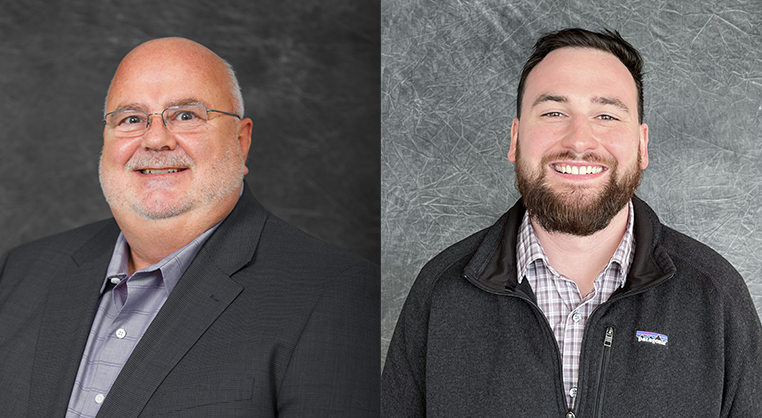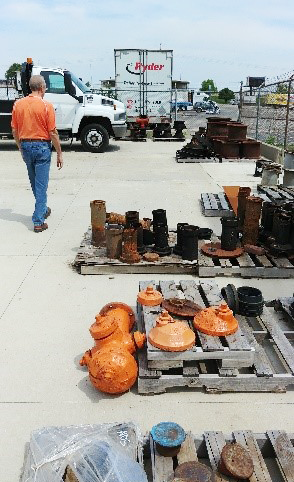Insights • February 11, 2025
An Inside Look at the MEP Industry from the Milhouse Team
Mechanical, Electrical, and Plumbing (MEP) engineers are essential to the engineering and construction industries. Their designs are crucial for building functionality and directly impact the comfort and safety of users and residents. MEP engineering is not only fundamental to the industry but also offers a rewarding career path for engineers who design the systems that operate behind the scenes.

Learn more about the industry from George Bouris, Milhouse’s Vice President, MEP, and MEP Mechanical Engineer III Bradley Kieltyka as they give their insights into being an MEP engineer, the new technology shaping the industry, and the advantages of pursuing a career in the field.
What do MEP Engineers Do?
An MEP engineer can have three primary focuses: mechanical, electrical, and plumbing. Mechanical engineers specialize in the heating, ventilation, and air conditioning (HVAC) systems that help maintain indoor air quality and thermal comfort. Electrical engineers design power distribution and lighting systems, guaranteeing that buildings are well-lit and equipped with reliable electrical services, while plumbing engineers manage water supply and waste management networks. MEP engineers consider building usage, climate, local regulations, and environmental impacts in their designs. They must also adhere to strict safety regulations to protect occupants and are involved in project planning and design phases, often juggling multiple tasks simultaneously.
“There is a lot of complexity regarding buildings and their MEP systems. Every building is different and presents its challenges,” Bradley said. “We need to make sure everything is correct in our calculations and designs before they are built. By considering these elements, MEP engineers create buildings that are structurally sound, energy-efficient, environmentally friendly, and beneficial for the well-being of occupants. Almost every project has challenges that require adjustments during the design or building phase. It’s the MEP engineers’ job to solve these problems to make the occupants comfortable.”
How Do You Become an MEP Engineer?

MEP engineers typically begin their career journey by obtaining a bachelor’s degree in mechanical, electrical, or related engineering fields. This foundational education not only provides a pathway to starting a career but can also ignite a passion for the field. For instance, Bradley’s experience at the Industrial Roundtable at Purdue University led to an internship with a temperature controls contractor. There, he had the opportunity to troubleshoot controls for a new hospital building, gaining firsthand insight into how MEP engineering can make a difference in people’s lives. He also emphasizes that there is more to MEP engineering than simply holding a degree: “Most people think to work and succeed in this industry you need to be good at math and physics, but I believe problem-solving and communication skills are more important. You need to be able to think on your feet and convey your thoughts effectively to clients and others working on the project. If you can be an effective communicator, then you’ll be able to grow in this industry.”
A master’s degree can help in finding a job, but it is not always necessary. Gaining experience through internships, hands-on experience, and finding mentors can also be important steps in building a career. Additional certifications, like becoming a Licensed Professional Engineer (PE), obtaining LEED accreditation, or earning the title of Certified Plumbing Designer (CPD), can also be beneficial.
“It is important to never stop learning. Technology and best practices are constantly evolving, so staying updated on industry trends is critical to long-term success.”
– George Bouris, VP, MEP
Why MEP?
With the rising emphasis on sustainable building practices and energy efficiency, the MEP industry is entering a new era of growth and opportunity. Experts anticipate its market value will double by 2030, going from $51 billion to $100 billion, a trajectory that places the MEP industry at the forefront of new and exciting engineering technology.
George has worked in the MEP field for over 30 years and has witnessed much growth and change in the industry. The past decade has brought significant advancements, particularly in “powerful BIM features and high-performance buildings that exceed the ASHRAE recommended minimum energy thresholds.” He is also excited about the industry’s future, noting that “The most thrilling [industry] development is the integration of AI into our design processes. In just ten years, AI will become a standard tool that enhances quality and drastically reduces design time and construction costs.” Innovations like these will improve industry efficiency and lead to more sustainable and resilient infrastructures for future generations.

As the industry grows, so do job openings, career stability, and opportunities. Because engineers are involved in multiple projects at a time, no two days are ever alike. For Bradley, a typical day starts with prioritizing tasks according to a project’s timeline. The tasks vary but can include “running calculations and designing all aspects of the HVAC systems for each project, drafting the mechanical plans in AutoCAD or Revit, coordinating with other members of our team on the electrical and plumbing side, attending coordination meetings with architects and/or other clients, working with vendors to select mechanical equipment, and going to project sites to survey existing conditions or see the progress of projects under construction to make sure everything is on schedule and being installed per the design documents we issued.”
A MEP career offers exciting global opportunities to work on different projects. “I have had the opportunity to engineer projects nationwide and internationally for various public and private sector clients. This includes data centers for the world’s fastest supercomputer, healthcare facilities, skyscrapers, and government facilities,” says George.
“Working in the MEP industry can be very rewarding, whether it’s giving a school cooling to make kids more comfortable while learning or working on buildings people you know occupy. I designed the HVAC systems for the community center where my daughter has gymnastics class and worked on the temperature controls for the hospital my mom works in.”
– Bradley Kieltyka, MEP Mechanical Engineer III
No matter the project, the collaborative nature of MEP engineering allows professionals to work alongside diverse teams on projects that impact communities worldwide, making it a great choice for those who want to shape the future of our built environment.
The Milhouse Approach to MEP
At Milhouse, our MEP engineers focus on the functionality and safety of education, healthcare, industrial, and commercial projects. According to George, our approach to MEP engineering is unique in that we “ensure consistent quality while stressing the importance of constructability to reduce construction questions and timelines.”
Milhouse is dedicated to advancing the careers of our MEP team members. We offer opportunities to work on a variety of projects and provide benefits like professional development and certification support. We believe that if “we hire exceptional people, fuel their passion while challenging them to excel and maintain a strong focus on our client’s needs, success will follow.” George adds, “Milhouse places a high emphasis on staff development and continuing education, which, in my opinion, exceeds that of most firms.”
